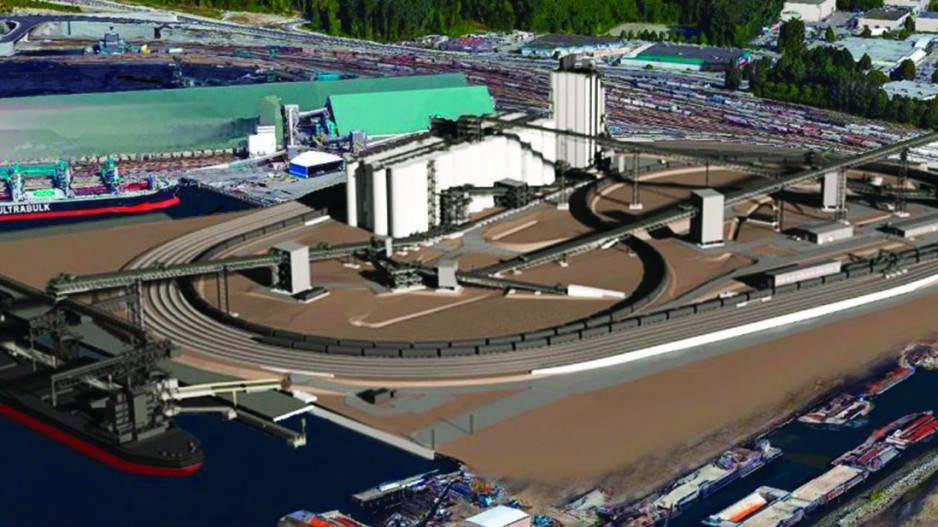2017 is shaping up to be a year of self-improvement in B.C.’s transportation sector as railways look to increase efficiency at export terminals and cut congestion, Canada’s major airlines continue to beef up flight frequency and TransLink looks to reduce overcrowding with increased service.
Aging infrastructure at export terminals is a growing challenge for Canada’s railways, said University of British Columbia Prof. David Gillen, director of the Centre for Transportation Studies at the Sauder School of Business.
“Canada’s railways are being challenged by aging export terminals, and investments in the Port of Vancouver need to be made if commodities are going to be exported efficiently.”
The G3 Terminal Vancouver will be a major piece of that infrastructure investment puzzle in 2017. A final investment decicion on the $500 million joint venture between G3 Global Holdings and Western Stevedoring Co. Ltd. was announced December 21. G3 will be the first new grain terminal built in the Port of Vancouver since the 1960s. Construction on the terminal at Lynnterm West Gate at the foot of Brooksbank Avenue on the North Shore is expected to begin in March.
Additionally, if the proposed $2 billion Terminal 2 container terminal at Roberts Bank is approved, changes to rail and other transportation infrastructure will be needed to reduce rail congestion in the Delta area. The three-berth container terminal, in planning stages since 2012, would add 2.4 million TEUs (20-foot containers) to the port’s annual container-handling capacity. It would also allow the port to handle more of the larger container ships now being deployed by major ocean shipping lines.
Canadian Pacific Railway Ltd. (TSX:CP) spokeswoman Salem Woodrow said she is optimistic that new investments by supply chain partners will increase port capacity and improve grain movement across the country in 2017.
Taking to the skies, Air Canada (TSX:AC) spokeswoman Angela Mah said via email that the company plans to nurture international growth in 2017 with new services to Frankfurt, London’s Gatwick Airport, Taipei and Nagoya. New trans-border flights to Dallas and Denver will begin in 2017.
WestJet (TSX:WJA), meanwhile, will take delivery of the company’s first Boeing 737 Max at the end of June 2017, WestJet spokesman Robert Palmer told Business in Vancouver by email.
The $6 billion 737 Max, he said, will have roughly 15% lower fuel and carbon emissions, be 40% quieter and have 50% lower nitrogen oxide emissions than its 737 predecessor. The new aircraft is scheduled to begin service in the latter half of 2017.
Back on the road, TransLink senior communications adviser Chris Bryan said in a phone interview with Business in Vancouver that the company plans to support existing lines of transportation with more frequent service in 2017, as well as complete infrastructure improvements.
Increases to service are expected to begin in April 2017 and continue to build in line with Phase 1 of TranksLink’s 10-year Vision.
Bryan admitted that transit overcrowding has become a provincewide concern, so service improvement is paramount. TransLink’s other planned improvements in 2017 include upgrades to SkyTrain’s Surrey Central, Metrotown and Commercial-Broadway stations.
As far as transit alternatives go, Uber remains out indefinitely in B.C., and commuters looking for increased taxi service will have to wait because Vancouver city council voted to extend a moratorium on new taxi licences until October 2017.




